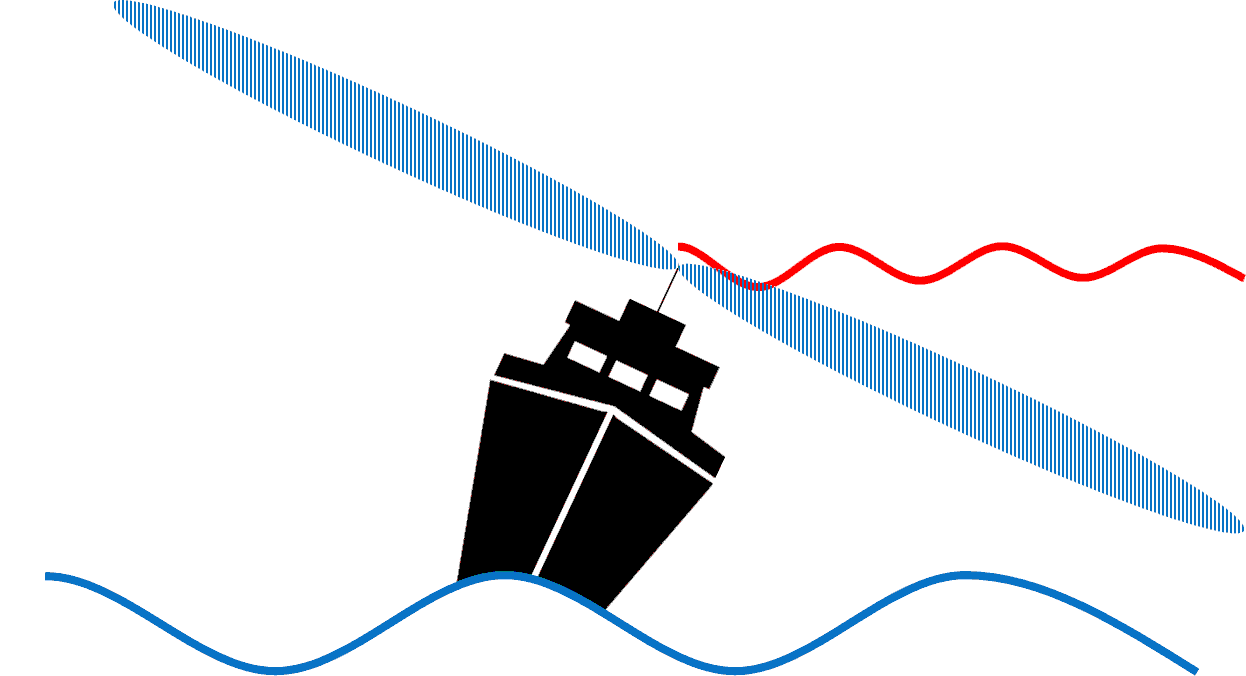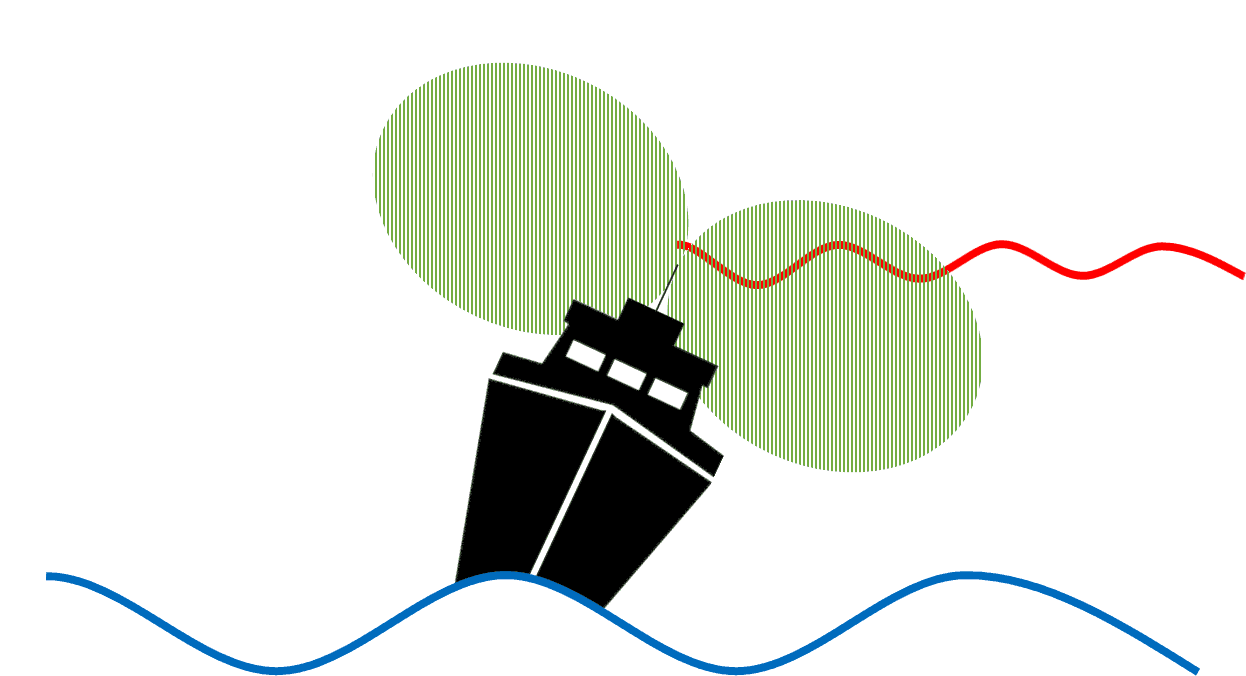Knowledge Base
Should I get a high-gain antenna or a low-gain antenna for my boat?
Your choice of cellular marine antenna depends primarily on three factors:
- How much gain the antenna has.
- How much your vessel typically pitches and rolls when it’s underway.
- How tall the antenna is and how high it will be mounted above the waterline.
Antenna gain
Gain describes how well an antenna converts radio waves into electrical power and vice versa. As antenna gain increases, the antenna’s range increases and its elevation beamwidth decreases. A high-gain antenna will have a narrower elevation beamwidth than a low-gain antenna:
 Vessel with a high-gain antenna
Vessel with a high-gain antenna
 Vessel with a low-gain antenna
Vessel with a low-gain antenna
Vessel pitch and roll
Radio waves travel parallel to the earth’s surface. Since the antenna’s beam needs to intercept the radio wave, a high-gain antenna is beneficial only if the vessel is not pitching or rolling excessively.
A boat or ship that regularly experiences swells that cause excessive pitching and rolling should use a low-gain marine antenna (3–6 dBi). Vessels that don’t pitch or roll excessively can use higher-gain antennas (6–9 dBi).
 Vessel with a high-gain antenna and a 25° roll
Vessel with a high-gain antenna and a 25° roll
 Vessel with a low-gain antenna and a 25° roll
Vessel with a low-gain antenna and a 25° roll
To learn more about antenna gain on boats and ships, watch this video from Poynting:
As Stephen Froneman notes in that video, Poynting’s marine antennas—like the OMNI-493 SISO, OMNI-402 2×2 MIMO, and OMNI-414 4×4 MIMO—have excellent omnidirectionality for a more consistent connection to cell towers.
Antenna height and elevation
In most cases, cellular signal is limited to line of sight. Due to the curvature of the earth, the higher the antenna is mounted, the greater its range:

This table will help you determine the line-of-sight range of Powerful Signal’s marine antennas. Cellular and other radio frequencies can sometimes travel beyond the horizon due to conditions like atmospheric ducting.
38.2″
81.9″
above water (ft)
range (nm)
range (nm)
range (nm)
range (nm)
Choosing the right marine antenna
Contact Powerful Signal at 435-634-6800 for help finding the right antenna for your boat, or check out our boat and marine signal booster kits.


